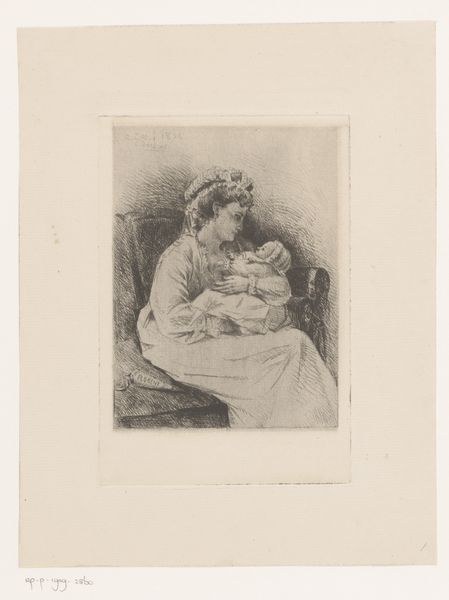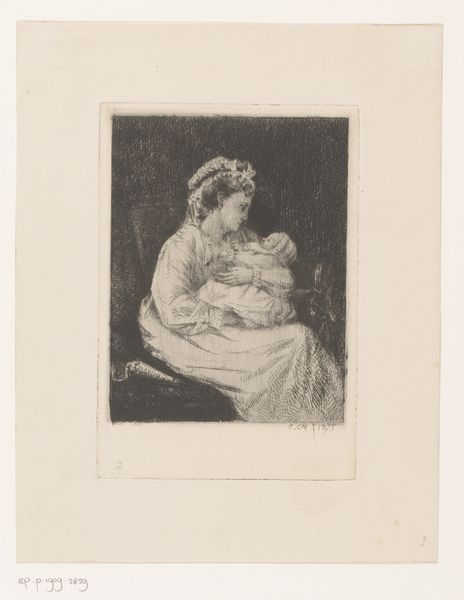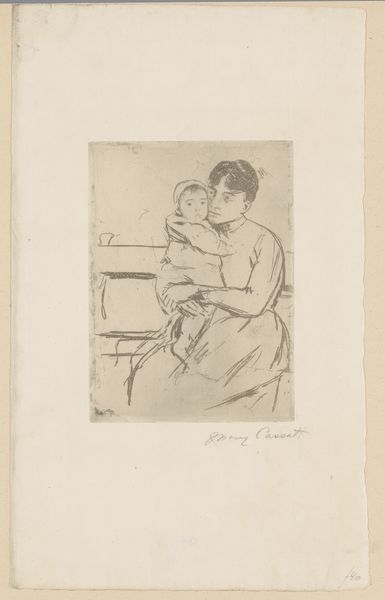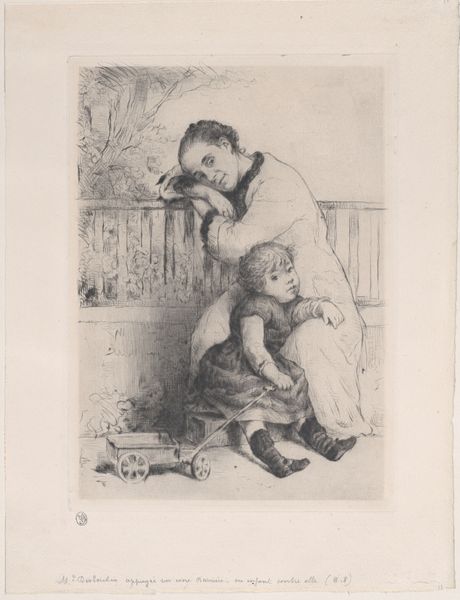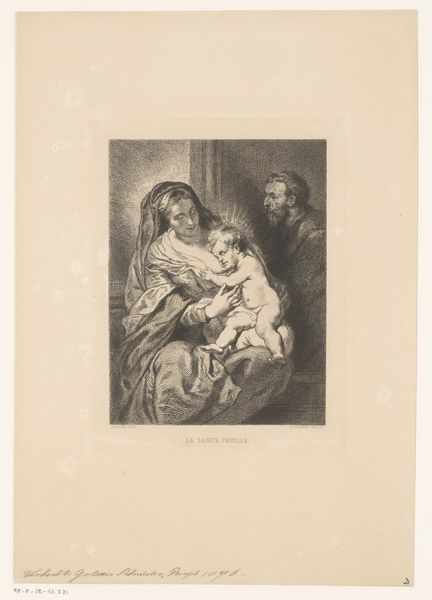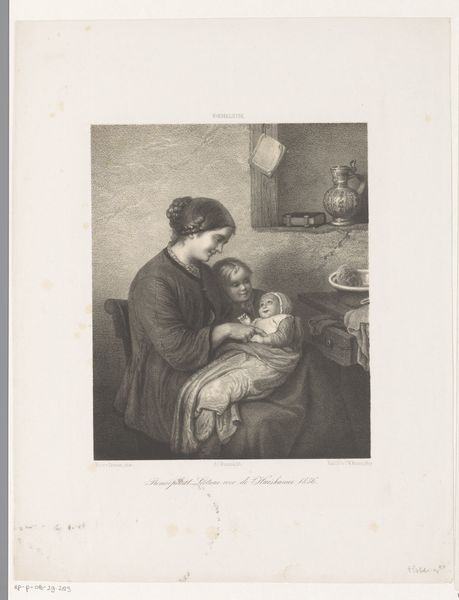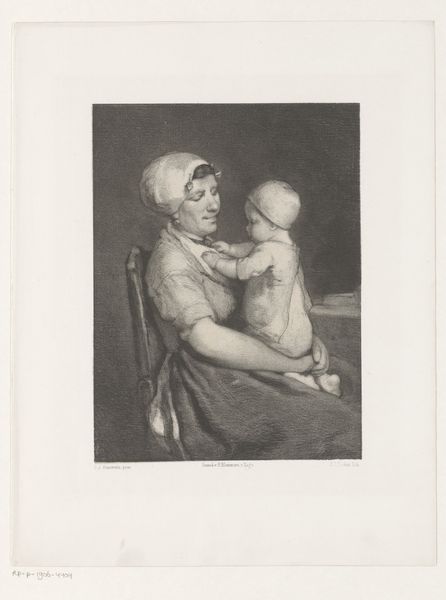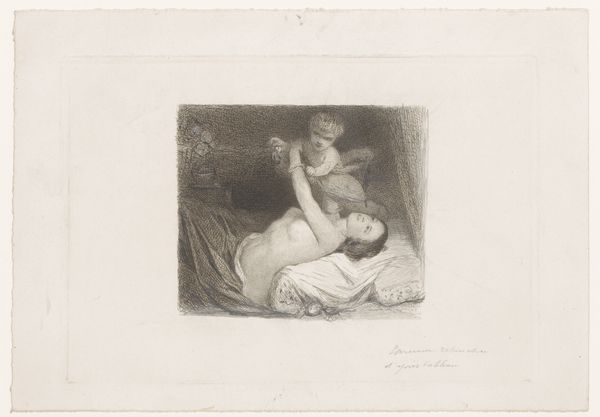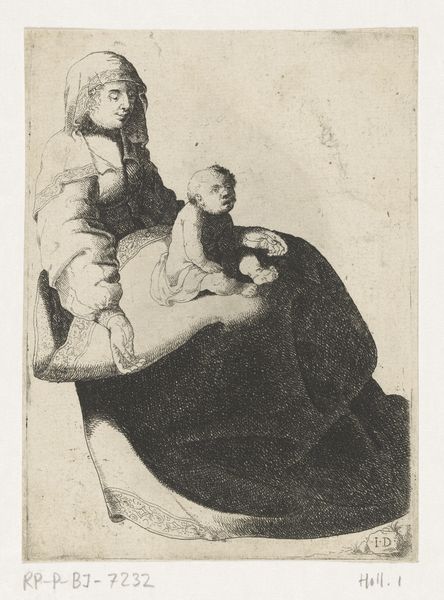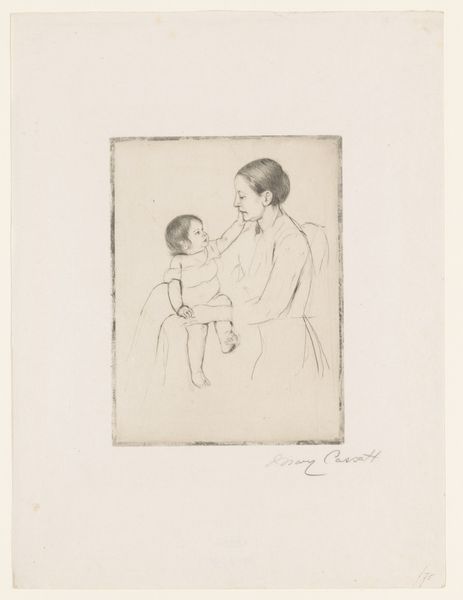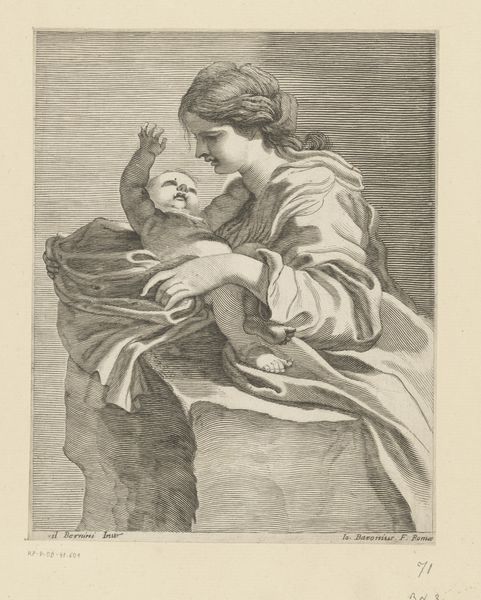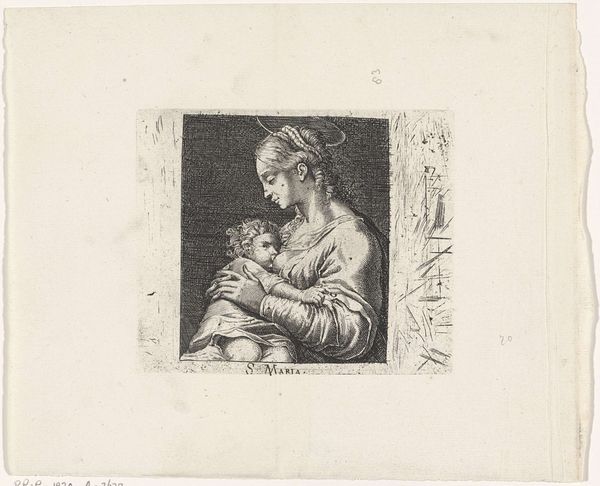
drawing, ink
#
portrait
#
drawing
#
ink
#
genre-painting
Dimensions: height 295 mm, width 213 mm
Copyright: Rijks Museum: Open Domain
Curator: My first impression is a profound sense of intimacy, a hushed moment frozen in time. There's a quiet dignity about it. Editor: Indeed. The work you’re looking at is "Vrouw die een kind voedt," which translates to "Woman Feeding a Child," a genre painting by Karl Wibmer, created between 1874 and 1891. It's a drawing in ink. What draws me in is the convergence of the Madonna-like subject and the social realism of representing working class womanhood. Curator: Absolutely, there is such grace and love being shared. What strikes me too is the contrast between the smooth lines of the child, its soft vulnerable head and body, and the heavy, scratchy rendering of the mother, worn down by who knows what, to conjure what might have been Wibmer’s vision of sacred love, with a more earthly understanding of its implications for both participants. Editor: And those darks, that deep chiaroscuro, create an interiority, an enclosure, a space outside of societal scrutiny or approval, which, given the time period, could be argued as radical. How does that density of ink alter your view of the subjects themselves? Curator: The darkness feels protective. Like a swaddling blanket wrapping this pair away from judgement or expectations. Perhaps Wibmer saw and captured in ink, this common miracle, elevated to this unique status in order to make an uncharacteristically sensitive cultural and artistic comment on it? Editor: I see the swaddling as also highlighting vulnerability; the blanket is covering up the child’s body to protect it from harm in this dark atmosphere where resources might be so hard to find. Given what we know of artistic training in the late nineteenth century, it’s impossible that Wibmer, and audiences in that period, would not also consider this scene alongside well-known images of the Madonna and Child. So how does this scene borrow or challenge those established ideals? Curator: Borrow, for sure, with an underlying, perhaps necessary sentiment that can elevate their love; while challenge is necessary, to add complexity through lived experiences; after all the ink drawing of this Madonna represents a love for everyone, regardless of location in any particular social system. Editor: Wibmer makes no claim about any divine right of this woman to have the baby; no halo; yet he’s celebrating their human condition by depicting their everyday routine as sacred in his own understanding. That feels pretty transgressive even today. Curator: Yes, it’s as though he’s peeled back the gilded layers to reveal the quiet strength at the heart of that kind of everyday love. Editor: A quiet strength which, through his drawing, he encourages the viewer to respect without any questions. Curator: The perfect kind of art which reflects this message that everyone needs, and the quiet peace it suggests.
Comments
No comments
Be the first to comment and join the conversation on the ultimate creative platform.

